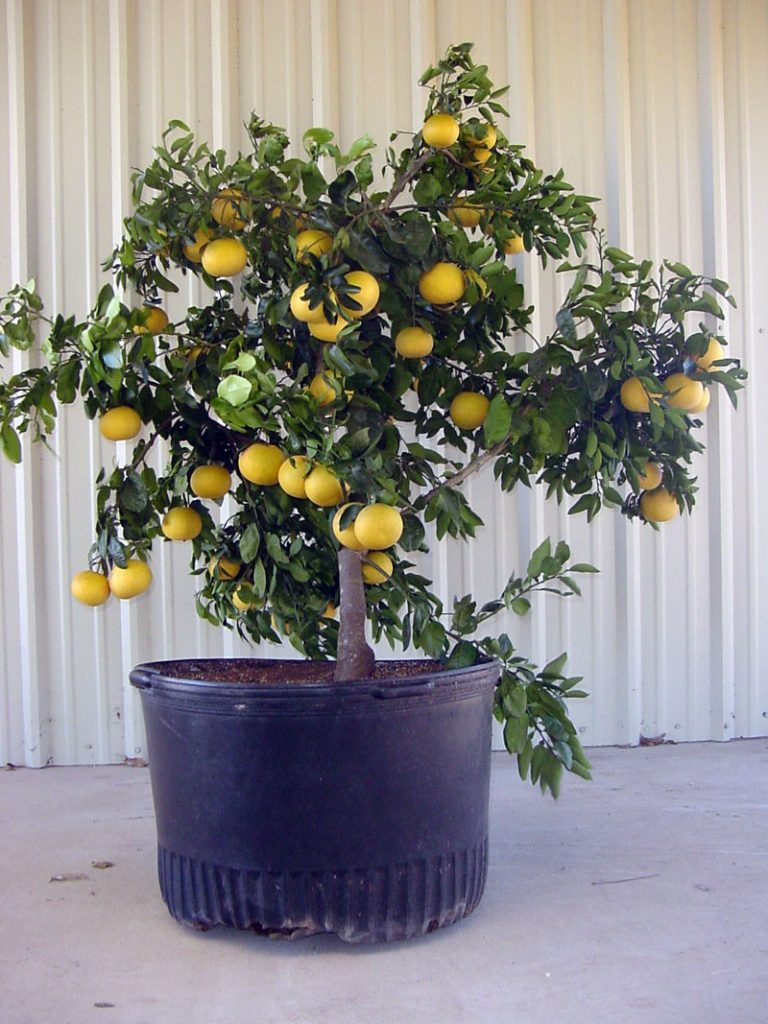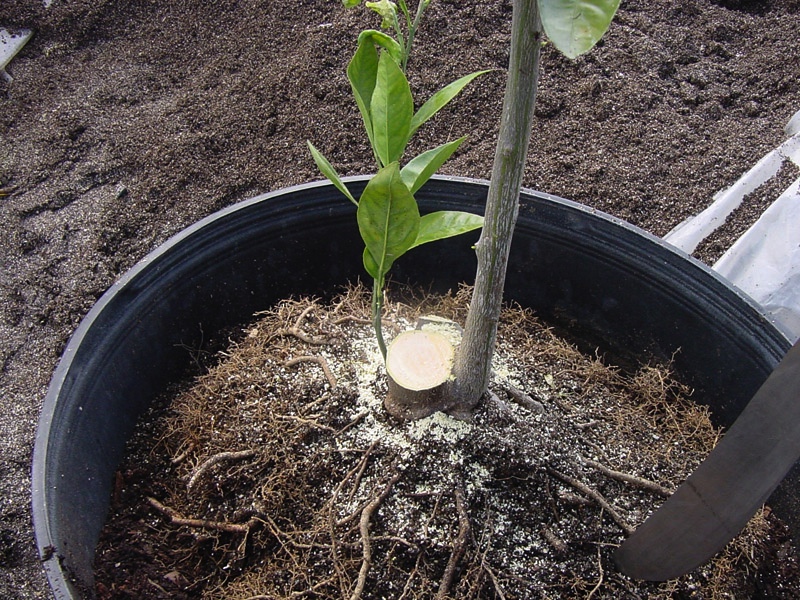The easiest and surest way to avoid potential freeze injury to citrus plants is by planting trees in containers that can be rolled into a protected area at the onset of adverse weather. Citrus are very special plants. Not only are they beautiful evergreen plants with lush, green foliage, but they have heavenly fragrant blooms in the spring and delicious fruit in the fall.

Though the satsuma is technically a small tree, its size can be dwarfed even more when it is containerized. Most people lose their citrus trees in the first or second year of the tree’s life. It pays to protect these small trees during 25 degrees F. or lower freezes. This can be easily done during extremely cold weather by covering completely with a two-layer combination of a blanket and then plastic. Remember to uncover the next day after the temperature has been above freezing for three hours. Once established, citrus trees can tolerate lower temperatures and recover more quickly from freezes. To “winterize” your tree, never fertilize after July as this promotes late, tender growth that is susceptible to freeze damage. When deciding where to put your tree for the winter, choose a microclimate which receives as much sun as possible and is sheltered from northern winds.
Invest in a well-drained potting mix (soil) to fill the container. Use a slow-release fertilizer such as Osmocote. Be sure to follow label directions. This slow-release fertilizer application should be done yearly in the spring (March). Plant one satsuma or citrus tree in the middle of the container. Annual flowers can be used in the container as an indicator for when to water the container. Citrus should be grown in a location which receives as much direct sun as possible. Watering is gauged by plant size and temperature. Larger citrus with more perimeter color plants require more frequent watering during hot, dry conditions.
When choosing a container for citrus, the larger, the better. Use a large container such as a whiskey barrel or 20-gallon container. If the container does not drain well, insure adequate drainage by drilling or
cutting holes in the bottom. If using a wooden container, attach heavy-duty coasters to help mobility. Container citrus should be pruned to maintain a balanced shape, and to keep fast-growing limbs from
outgrowing the top of the tree. Trees that are not getting enough sun will become leggy. Prune back leggy branches to encourage side branching and a more compact growth of the top. Move to a location
which gets more sun-preferably 8-10 hours of direct sun daily with morning sun and afternoon shade.

Every 3 – 4 years, trees will outgrow their containers. This is usually signaled by leaf shed or browning and twig dieback which is not related to drought stress. You have two choices: Move the tree to a larger pot, or lift the plant out, prune the roots and put it back in the same pot with some fresh potting mix. Remember, the ultimate size of the tree is directly related to the size of the container. If you want a larger tree, choose another container which is at least 25 percent larger than the original, repot the tree using new potting mix fortified with slow-release fertilizer pellets and water thoroughly. If you want to keep the plant in the same container and are happy with the size of your tree, lift it out of the pot, cut about a quarter of the roots or about 2 – 3 inches off, shake off the loose soil, and pot it with new potting soil as above. Prune at lease a third of the foliage off at the time of this root reduction.
Invest in a well-drained potting mix (soil) to fill the container with. Use a slow-release fertilizer such as Osmocote. Be sure to follow label directions. This slow-release fertilizer application should be done
yearly in the spring (March). Plant one satsuma or citrus tree in the middle of the container. Annual flowers can be used in the container as an indicator for when to water the container. Citrus should be grown in a location which receives as much direct sun as possible. Watering is gauged by plant size and temperature. Larger citrus with more perimeter color plants require more frequent watering during hot, dry conditions.
Over watering is the most common cause of poor performance of container citrus trees. Water only as needed. Generally, allow the upper inch of the medium to become dry before watering. Then apply water slowly to fill the container, permitting the excess to drain out the bottom. Soils generally stay wet longer in plastic, metal and ceramic containers than in wood or clay containers which permit water evaporation through the sides. Cool weather slows growth, so reduce watering frequency during winter.
Most container citrus trees produce too many fruit for the size of the tree. Thinning or removing a large number of fruit every spring will ensure tree health, fruit size and prevent alternate bearing (producing
a crop every other year because of over-fruiting stress on the tree). Do not let small, young trees set too much fruit or you will stunt their growth and decease overall production. A 5-gallon tree should only be allowed to set 4 to 6 fruit the first year. As the tree size increases, there should only be one fruit for every 42 leaves. If you do not allow your tree to overproduce, it will provide you with crop-after-crop,
year-after-year of delicious citrus. Over fruiting also makes the trees more susceptible to pest damage and freeze injury.
Though satsumas are considered to be one of the most cold-hardy edible citrus, temperatures below 20 degrees F. will defoliate trees and make them non-productive the following year. So, avoid low temperatures in protected areas where trees are stored. Containerized plants that can be stored in garages are easier to keep warm during prolonged periods of cold. It is more economical to maintain the temperature of a garage above 25 degrees F. than it is to maintain the same temperature in a plastic-covered lean-to type structure on the side of the house. The root system is more susceptible to cold damage because it is not so well insulated in containers as in the ground. Container-grown citrus will require some form of cold protection to survive most freezing temperatures. Moving them to a protected area during freezes may be the simplest solution.